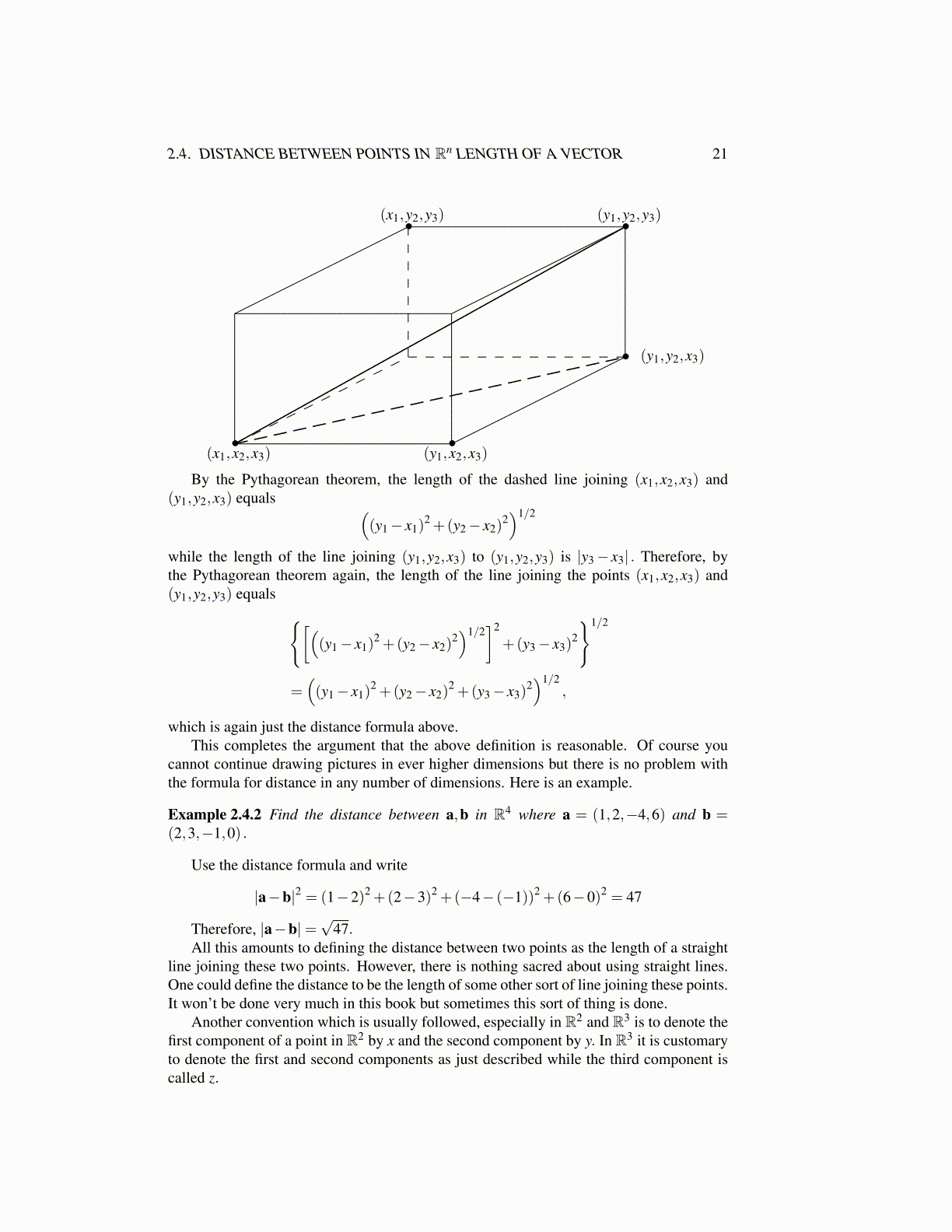
2.4. DISTANCE BETWEEN POINTS IN Rn LENGTH OF A VECTOR 21
•(x1,y2,y3) •
(y1,y2,y3)
•(x1,x2,x3)
•(y1,x2,x3)
• (y1,y2,x3)
By the Pythagorean theorem, the length of the dashed line joining (x1,x2,x3) and(y1,y2,x3) equals (
(y1− x1)2 +(y2− x2)
2)1/2
while the length of the line joining (y1,y2,x3) to (y1,y2,y3) is |y3− x3| . Therefore, bythe Pythagorean theorem again, the length of the line joining the points (x1,x2,x3) and(y1,y2,y3) equals {[(
(y1− x1)2 +(y2− x2)
2)1/2
]2
+(y3− x3)2
}1/2
=((y1− x1)
2 +(y2− x2)2 +(y3− x3)
2)1/2
,
which is again just the distance formula above.This completes the argument that the above definition is reasonable. Of course you
cannot continue drawing pictures in ever higher dimensions but there is no problem withthe formula for distance in any number of dimensions. Here is an example.
Example 2.4.2 Find the distance between a,b in R4 where a = (1,2,−4,6) and b =(2,3,−1,0) .
Use the distance formula and write
|a−b|2 = (1−2)2 +(2−3)2 +(−4− (−1))2 +(6−0)2 = 47
Therefore, |a−b|=√
47.All this amounts to defining the distance between two points as the length of a straight
line joining these two points. However, there is nothing sacred about using straight lines.One could define the distance to be the length of some other sort of line joining these points.It won’t be done very much in this book but sometimes this sort of thing is done.
Another convention which is usually followed, especially in R2 and R3 is to denote thefirst component of a point in R2 by x and the second component by y. In R3 it is customaryto denote the first and second components as just described while the third component iscalled z.